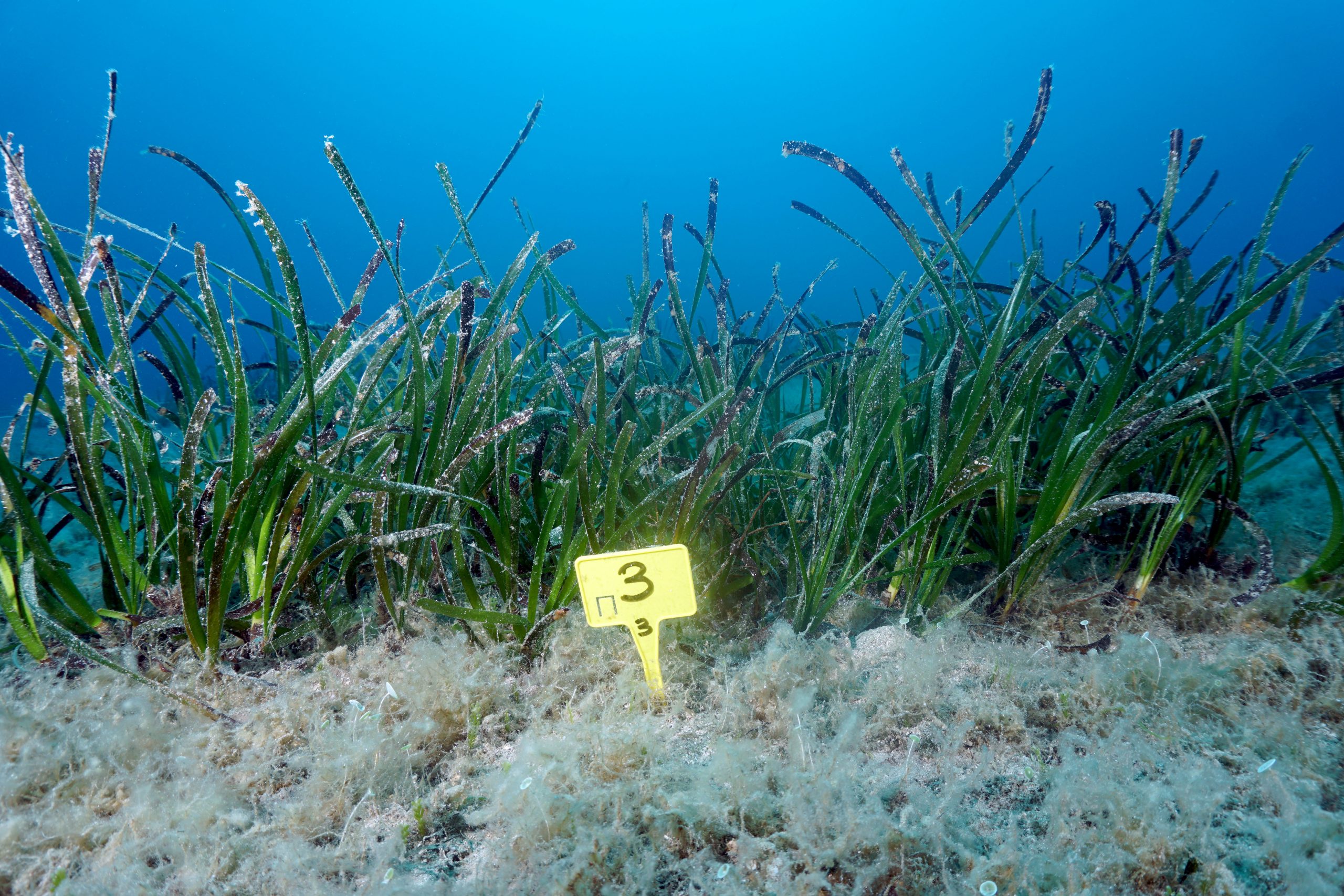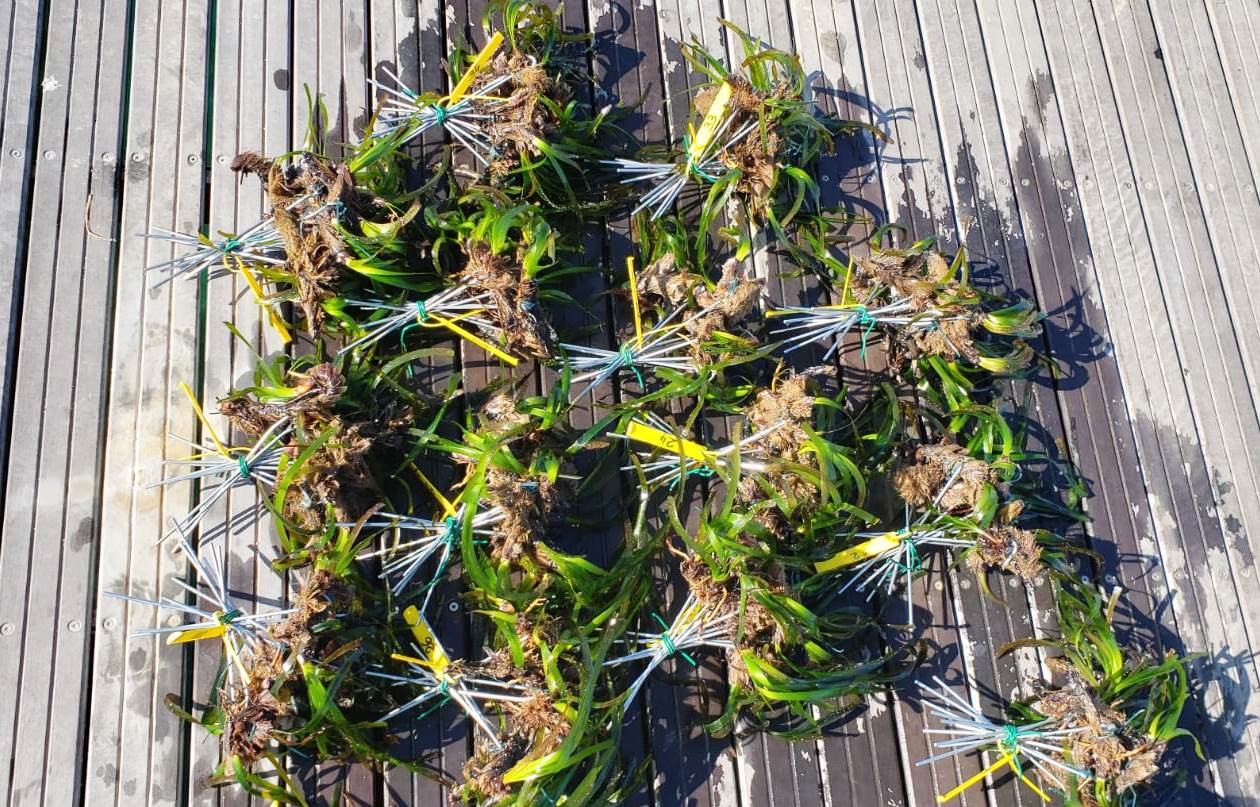The month of May was an opportunity for THALASSA Marine research to continue phase 2 of the RENFORC project. With Dr. Heike Molenaar, we carried out the follow-up of some 1000 Posidonia cuttings that we had transplanted in the spring of 2021 on nearly 20m2 in the bay of Sant’Amanza in the heart of the Nature Reserve of the Strait of Bonifacio.
This return one year later was an opportunity to follow the evolution of our cuttings after 4 post-transplant seasons, to estimate their survival capacities as well as their growth. The first results are extremely positive since we were able to observe the survival of almost all the cuttings and an overall increase in the number of leaf bundles.
We have also launched a new experimental pilot from posidonia cuttings called “wreck”, i.e. harvested from the bottom when they are detached from the seagrass by the action of the current or anchors. For this new pilot, we transplanted more than 400 cuttings on 8m2 following our protocol. The ultimate goal will be to compare the effectiveness of our method on different types of cuttings grown and transplanted in the bay of Sant’Amanza. The appointment is made next year to see their evolution!
While Blue Carbon is increasingly cited as a means of action against global warming, the integration of blue carbon ecosystems in currently voluntary compensation approaches would offer players the opportunity to reduce their ecological footprint and to commit to the marine environment and a more sustainable society.
This study is part of the RENFORC program involving GIS Posidonie and the Coastal Ecosystems Team of Université de Corse Pasquale Paoli (UMR CNRS SPE 6134/FRES 3041). This program receives financial support from:
– The SETEC Foundation www.fondationsetec.org
– The French Office for Biodiversity https://www.ofb.gouv.fr/
– The Office of the Environment of Corsica https://www.oec.corsica/




